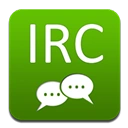Autodesk 3ds Max
3ds Max 2008 Features
New Polygon Modeling Workflow
A collection of ?hands-on? modeling options, new in Autodesk? 3ds Max? 2008, lets you take advantage of a more streamlined, artist-friendly modeling workflow. This video introduces you to two of these new options: temporary pivot overrides and a new subobject previewing workflow that lets you preview and select subobjects in one fluid motion and switch between subobject modes in the viewport. You?ll also learn how to take advantage of the new Multiple UV Unwrap operation?a feature that makes it significantly easier to organize the mapping of multiple objects into one texture.
Autodesk 3ds Max 2008 delivers new technology and optimizations that result in vastly improved performance for even the largest, most complex scenes. This video will demonstrate how new adaptive degradation enhancements ensure your viewport interaction rates by automatically simplifying scenes to meet target frame rates. When combined with the new Direct3D mesh caching, which groups objects by materials, the result is that tens of thousands of objects become just as interactive as ten objects. Plus, you?ll see how easy it is to control the degree to which 3ds Max simplifies your scene: You just select a desired level of viewport interactivity and 3ds Max calculates how best to achieve it.
Review Rendering
The powerful, new Review rendering toolset gives you immediate feedback on various render settings, enabling you to iterate rapidly. This means you can now quickly hone in on your desired look without waiting for a software render?perfect for over-the-shoulder client/boss feedback sessions and other iterative workflows. This video demonstrates the Review rendering toolset?s ability to deliver interactive viewport previewing of shadows, its improved workflow for those using the 3ds Max Sun/Sky system, and new mental ray Architectural and Design material settings. You?ll also learn how to take advantage of the new mental ray Sky Portal system?a workflow that simplifies the process of lighting indoor scenes with outdoor lighting.
Autodesk 3ds Max/Revit Interoperability
Deeper support in 3ds Max 2008 for DWG? and Autodesk? FBX? file formats results in faster, more accurate importing of data from other popular Autodesk applications such as Revit? Architecture 2008. This video will introduce you to two new features that streamline 3ds Max/Revit workflows: support for DWG solids?including all materials assigned to these objects?and support for imported Sun/Sky/geographic location parameters, including time of day and time zone.?
Autodesk 3ds Max/mental ray Enhancements
A number of major enhancements to mental ray and the 3ds Max 2008/mental ray workflow will help you to achieve your desired look faster. This video introduces you to
The Sky Portal workflow for lighting indoor scenes with outdoor lighting
?The self-illumination feature for mental ray Architecture and Design materials
The Render to Texture presets
The photographic exposure UI?a camera-based interface for managing exposure settings (tone-mapping)




















